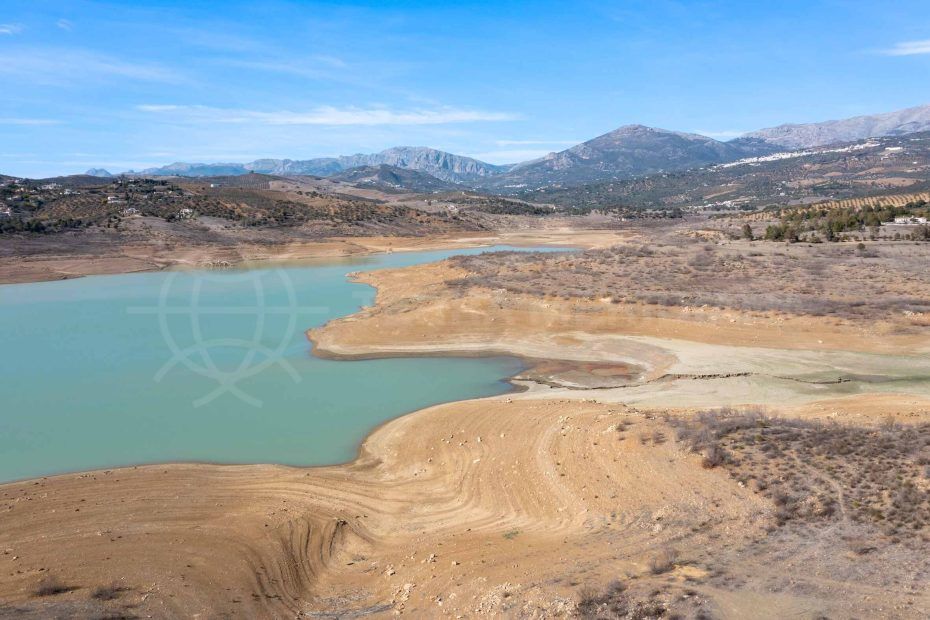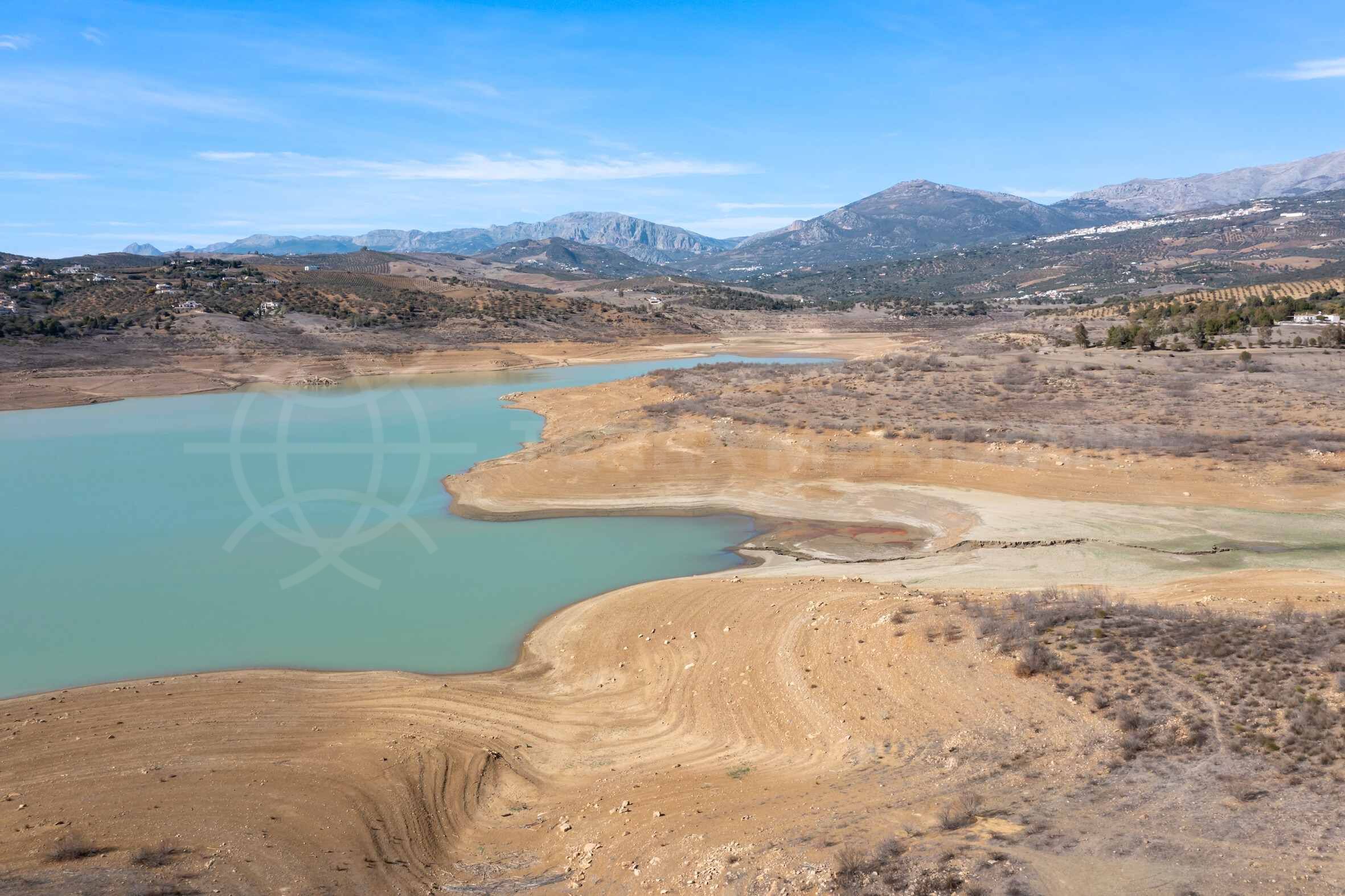Opinion
Addressing Andalusia’s Water Crisis
The region faces an unprecedented shortage of fresh water for everything from showers to mangoes. Fixing the problem will require innovative thinking.

Drought Decree and Funding for Emergency Measures
At the end of January, the Junta de Andalucía (our regional government) declared the region’s fourth drought decree. They also allocated a whopping 217 million euros in emergency measures and are seeking aid from the EU to tackle the crisis.
The ongoing drought in Andalusia has reached severe levels, with reservoir capacity down to just 22.21% on average across the region. Rainfall this season is only 31% of normal levels. Over 5 million Andalusian residents are already facing water restrictions of varying degrees.
Impact on Malaga Province and Nightly Water Shutoffs
In Malaga province specifically, reservoir levels have dropped 130 hectometres over the last year, leaving only 95 hectometres remaining. The average reservoir level in the province is now just 15.3% of the total capacity. In fact, 2023 was the driest year in Malaga since records began in 1961. There were only 218 litres per meter2 of rainfall. So far, 2024 is shaping up to be unchanged from last year, with far too little precipitation.
As a result, an estimated 250,000 people along the Malaga coast already face restrictions. Fifteen municipalities are experiencing nightly water shutoffs, affecting around 100,000 people. In Córdoba, 80,000 residents have been without potable running water for over a year, relying on trucked and bottled water. Similar rationing measures have been introduced in Gibraltar and the Western Costa del Sol. Residents are only permitted 160 litres/day in those regions.
Challenges for Agriculture and Tourism
Having this degree of crisis with a basic necessity like water in an industrialised country is unacceptable and disturbing. If rainfall does not dramatically improve, further measures may be put in place over summer including garden, pool and car wash hose bans. Nor are commercial uses of water spared the rationing measures implemented by the Drought Management Commission of the Andalusian Mediterranean Basins.
Effects on Industry and Required Adjustments
For Industry there is a 20% reduction in water usage ordered. The Campo de Gibraltar agricultural area has a maximum irrigation allocation of just 2 cubic hectometres for the season from June onward, a 75% decrease. Similar 75% irrigation cuts were also introduced in other agricultural zones like Guadalhorce-Limonero.
The Broader Impact of Water Rationing
The impacts of such rationing and from a lack of rainfall are widespread and in some instances, quite profound. The Axarquia region grows over 16,000 hectares of subtropical crops like mangoes and avocados. With reservoirs like La Viñuela below 7.5% capacity, crops are severely struggling. Falls of up to 80% in tropical fruit harvests are already reported. But it’s not just agriculture that needs water and could be affected by water shortages.
Tourism at Risk Due to Water Shortages
If drought impacts cascade, tourism could take a major hit. The year 2023 saw a record 14 million visitors to Malaga province deliver 19 billion euros in revenue. However, if there isn’t rapid action, that could be a peak that isn’t repeated. Measures affecting pools, gardens and water access especially could deter visitors. People on holiday expect to be able to take a shower after returning from the beach. They expect pool and spa facilities if they stay at a four- or five-star hotel. How will they feel if they are told they can’t shower between sunset and sunrise?
Long-Term Drought and Agricultural Changes
As I noted above, the last five years since 2018-2019 have seen rainfall at only 30% of average seasonal levels in Andalusia. This has been described as “the longest and most intense drought since the one it went through in the 1960s.” That would be bad enough, but a number of elements are also coming into play that are exacerbating the water crisis.
For instance, traditional low-water-use crops are rapidly converted to high-intensity irrigation. Olives and almonds have given way to mangoes and avocados in areas like Axarquia.
“For years, we were consuming more water than we had, but we have had to suffer a prolonged and intense drought to realise it,” José Damián Ruis Sinoga, professor of Geography at Malaga University, was quoted as saying in an article in El Pais recently.
And just as agricultural practices have changed, tourism has grown in importance, attracting millions every year. It’s like a perfect storm of water overuse.
The Balance between Tourism and Water Consumption
Of course, we need tourism. It keeps our economy afloat. But it also comes at a cost in terms of water consumption. On average, tourists use up to triple or quadruple local resident usage. Luxury hotels with pools and spas often see 500-700 litres used per tourist daily. Golf courses use enormous quantities of water to keep large, unshaded areas of lawn green all year round.
Finding Sustainable Solutions
There is no doubt that the water crisis facing Andalusia and the Costa del Sol in particular is complicated. We can’t just cancel tourism or agriculture. According to the Minister of Tourism, over half a million people work directly in tourism in Andalusia. It contributes 15% to the region’s GDP or a massive 25,000 million euros.
We need to find solutions that don’t destroy the economy and people’s livelihoods. But we also can’t just keep the number of tourists growing. It can’t just be about numbers, or we will simply run out of space and resources. As the Secretary of State for Tourism, Rosana Morillo stated: “Spain has to make a bet on quality, in any part of its territory and any moment of the year” rather than entirely focused on the volume of travellers, a few regions, or a few months each year. This “de-seasonalization”, or making all year a season, helps to reduce the intensity of the load on infrastructure, including water resources.
Junta’s Efforts to Address Water Crisis
It is important to say that the Junta does seem to be making efforts to address the problem with both water-saving measures and infrastructure investment through its “Drought Plus” strategy. For instance, the Junta plans upgrades to the Marbella desalination plant expansion from 6 to 12 and then 20 hm3. New desalination plants are also planned for Estepona and Malaga.
For immediate relief there are plans to use portable desalination and improved wells are other short-term supply actions. Water could even be shipped directly to Malaga and Algeciras harbours. This measure is already happening in Catalonia, which is also suffering a historic drought.
Within the tourism industry, the big players at least are planning a number of important upgrades to facilities. For instance, some hotels are adding greywater recycling, low-flow fixtures, and other efficiency upgrades to assure visitors 24-hour supply despite restrictions. Visitors are also being asked to keep showers under 5 minutes. Golf courses are also finding ways to recycle and reduce their water consumption. The Metro system’s groundwater flows are being explored as an emergency stopgap for Malaga City. Buying water by ship from beyond Andalusia is another possibility to bridge the crisis.
The Need for Comprehensive Solutions
All these measures are important and will ultimately go some way to solving the crisis, which has been left to develop for far too long by all political players. But we must not rob Paul to pay Peter, as it were. For instance, desalination comes at a cost and can create other problems. It is energy intensive and if it’s going to work we need to also invest in more renewable energy. Regardless of your views on the environmental aspects of renewable energy, it is indisputable that the falling cost of solar and wind power is a potentially huge boon to Spain. The coast in particular has an enormous amount of sunshine.
Balancing Economic and Environmental Needs
Spain has the potential to be an energy superpower and a well-thought out plan to integrate desalination with renewable investment could give a boost to industrial diversification. That could help to overcome an unhealthy imbalance in the economy towards tourism. But desalination also has a pollution cost in terms of its waste produce – brine, or heavily salted water. Pumping tens of millions of briny water into the Mediterranean, all along the coast, could seriously damage coastal plant and animal life.
Looking Towards a Sustainable Future
We must be careful to develop solutions that don’t require major fixes down the road – because we didn’t think through the impact of our actions today. It seems clear that improving the water situation requires a rethink in how we use it, what kind of crops we grow, what kind of tourism we encourage, the number of hotels and resorts we build – as well as how we acquire it, whether from rainfall, groundwater or desalination.
By Adam Neale | Opinion | March 5th, 2024
